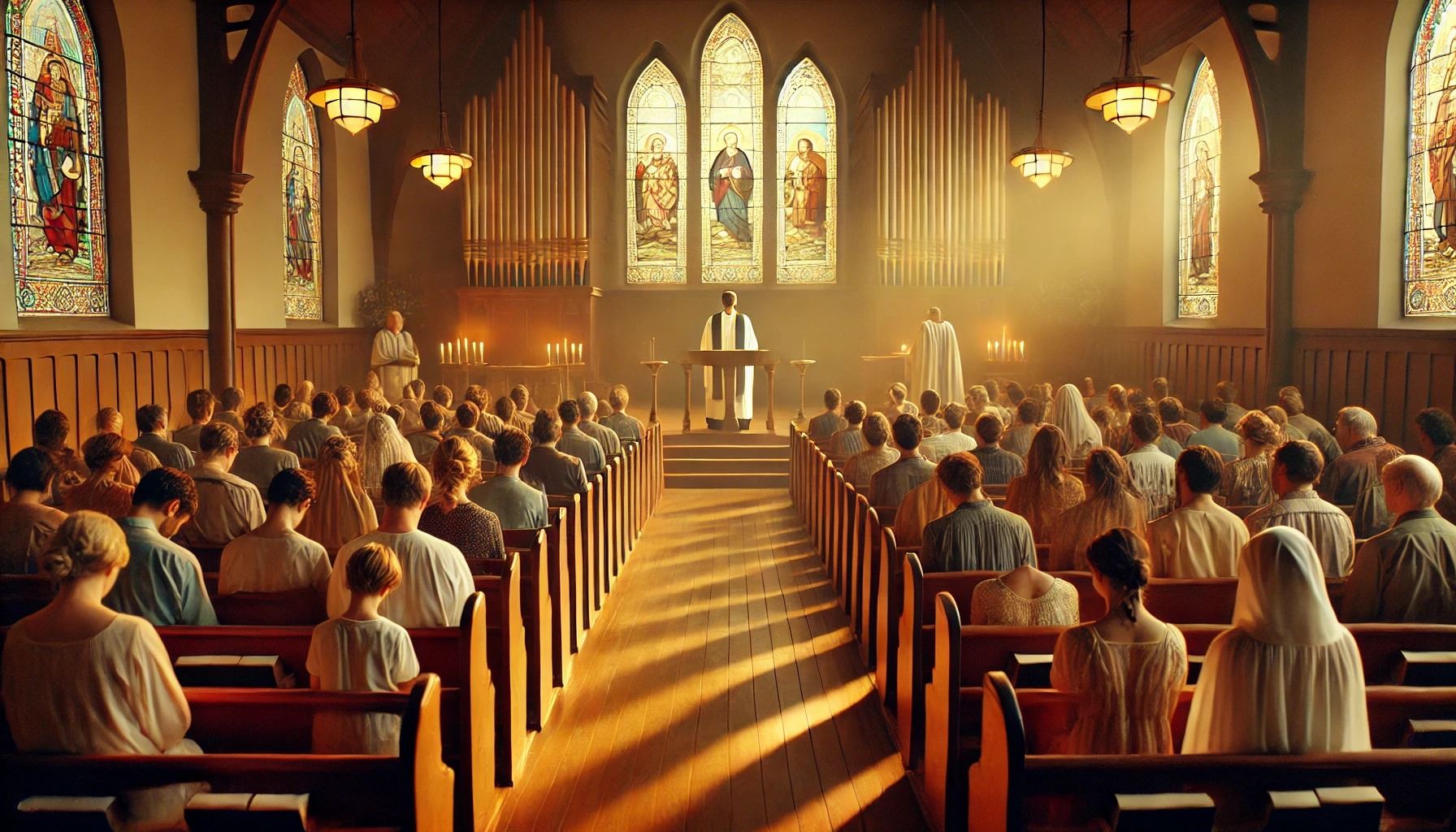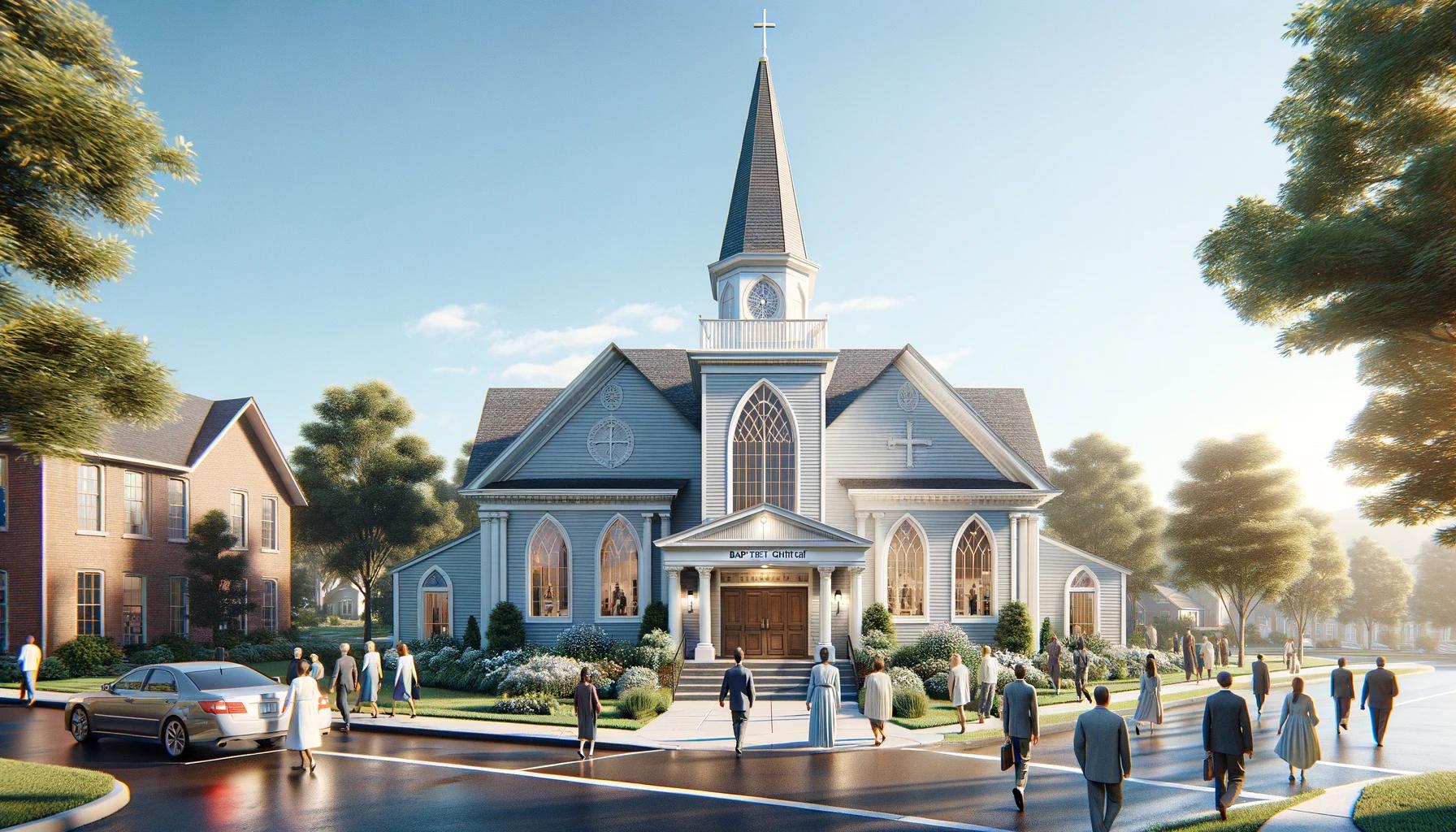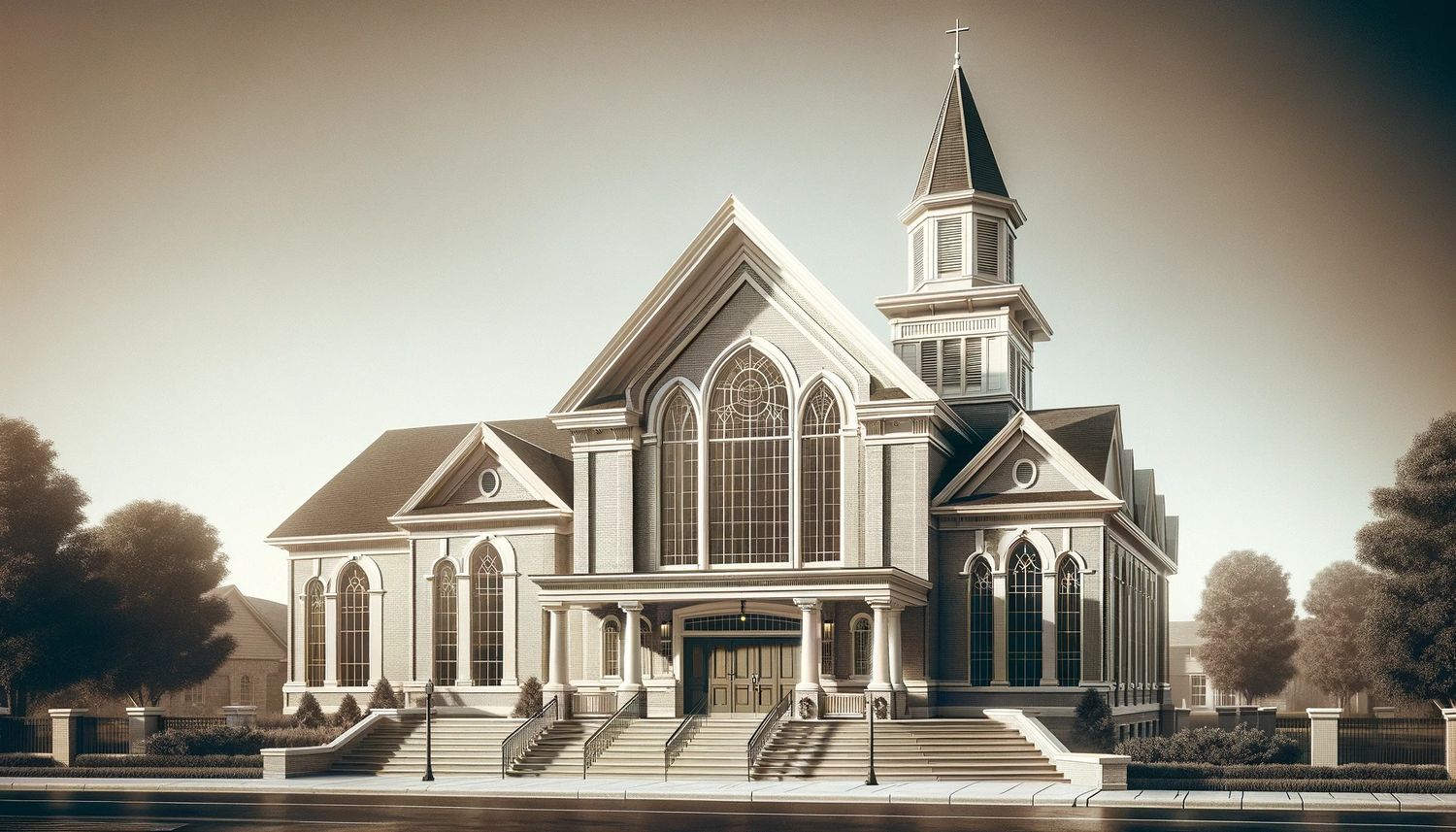Home>Theology and Spirituality>What Is The Homecoming Service At A Baptist Church


Theology and Spirituality
What Is The Homecoming Service At A Baptist Church
Published: February 21, 2024
Ericka Andersen, an editor at Christian.net, expertly merges digital strategy with content creation, focusing on faith and societal issues. Her communication skills enhance the platform's engaging narratives, fostering meaningful dialogue on belief's impact on society.
Discover the significance of the homecoming service at a Baptist church and its role in theology and spirituality. Explore the traditions and spiritual connections in this meaningful event.
(Many of the links in this article redirect to a specific reviewed product. Your purchase of these products through affiliate links helps to generate commission for Christian.net, at no extra cost. Learn more)
Table of Contents
Introduction
The homecoming service at a Baptist church is a cherished tradition that holds a special place in the hearts of congregants. It is a time of joyous celebration, heartfelt reunions, and spiritual renewal. This annual event serves as a beacon, drawing together current members, former parishioners, and even those from the wider community who have a connection to the church. The homecoming service is a testament to the enduring bonds of faith, fellowship, and heritage that are woven into the fabric of Baptist congregations.
This occasion is marked by a palpable sense of anticipation and excitement as individuals and families make their way back to the church where they have shared countless memories and experiences. The air is filled with a spirit of warmth and camaraderie, as old friends embrace, and new acquaintances are welcomed with open arms. The sanctuary resonates with the sounds of laughter, shared stories, and the familiar hymns that have echoed through the halls for generations.
As the congregation gathers, there is a palpable sense of reverence and gratitude for the legacy of faith that has been passed down through the years. The homecoming service is a time to reflect on the rich history of the church, to honor the contributions of those who have gone before, and to rekindle the flames of devotion that burn brightly within each member.
This annual event is not merely a nostalgic trip down memory lane, but a vibrant affirmation of the enduring vitality of the church community. It serves as a reminder that the church is not just a building, but a living, breathing organism, sustained by the faith, love, and dedication of its members. The homecoming service is a testament to the resilience of the church, a testament to the enduring power of faith, and a testament to the unbreakable bonds that unite the congregation as one family.
In the following sections, we will delve into the rich history of homecoming services in Baptist churches, explore the purpose behind this cherished tradition, examine the customs and traditions that make it unique, and reflect on its profound significance in the life of the church. Join us on this journey as we unravel the tapestry of the homecoming service and discover the deep spiritual resonance it holds for Baptist congregations.
Read more: What Are Baptist Church Services Like
History of Homecoming Service in Baptist Churches
The history of homecoming services in Baptist churches is steeped in tradition and holds a significant place in the annals of religious observance. The roots of this cherished practice can be traced back to the rural communities of the American South in the 19th century. During this time, many Baptist congregations were situated in close-knit, agrarian settings, where families often lived in close proximity to one another. The church was not only a place of worship but also a focal point of social cohesion and communal identity.
As families began to migrate to urban centers in search of economic opportunities, the ties that bound them to their rural churches remained strong. The homecoming service emerged as a way to honor these deep-seated connections and provide a means for dispersed congregants to come together in a spirit of fellowship and spiritual renewal.
The earliest homecoming services were often held in conjunction with the church's anniversary, providing an opportunity for former members, distant relatives, and friends to return to their home church for a day of celebration and reconnection. These gatherings were marked by joyous reunions, heartfelt reminiscences, and a reaffirmation of shared faith and heritage.
Over time, the homecoming service evolved into an annual tradition, typically held in the late summer or early fall, when the harvest season allowed for greater flexibility in travel. It became a time for families to return to their roots, to visit the graves of loved ones, and to partake in the communal fellowship that had sustained them through generations.
The homecoming service also served as a poignant reminder of the church's enduring legacy, as older members shared stories of the trials and triumphs that had shaped the congregation's history. It became a time to honor the sacrifices of those who had labored in the vineyard of the Lord, to pay homage to the stalwart pillars of the church, and to instill in the younger generation a deep appreciation for their spiritual heritage.
As the years passed, the homecoming service transcended its rural origins and found resonance in urban and suburban Baptist churches across the country. It became a cherished tradition that bridged the generations, fostering a sense of continuity and belonging within the church community.
Today, the homecoming service continues to hold a special place in the hearts of Baptist congregations, serving as a testament to the enduring bonds of faith, fellowship, and heritage that unite them as one family under God.
Purpose of Homecoming Service
The homecoming service in a Baptist church serves a multifaceted purpose that resonates deeply with the congregation and the broader community. At its core, the homecoming service is a time-honored tradition designed to fulfill several essential objectives:
1. Celebration and Reunion
The primary purpose of the homecoming service is to celebrate the rich history and enduring legacy of the church. It provides a joyous occasion for current and former members, as well as friends of the church, to come together in a spirit of reunion and fellowship. This celebration often includes shared meals, storytelling, and the rekindling of cherished relationships, creating an atmosphere of warmth and camaraderie.
2. Spiritual Renewal
The homecoming service offers a unique opportunity for spiritual renewal and revival. It serves as a time of reflection and recommitment to the foundational principles of faith, love, and service. Through inspiring sermons, uplifting music, and heartfelt prayers, congregants are encouraged to rekindle their spiritual fervor and deepen their connection to God and one another.
Read more: How Long Is A Baptist Church Service
3. Commemoration and Gratitude
Another vital purpose of the homecoming service is to commemorate the contributions of past generations and express gratitude for their enduring impact on the church. It is a time to honor the sacrifices, dedication, and unwavering faith of those who have laid the groundwork for the church's continued growth and prosperity.
4. Community Outreach
The homecoming service often extends a warm invitation to the broader community, welcoming neighbors, friends, and newcomers to share in the celebration. This outreach serves as an opportunity to showcase the church's welcoming spirit and to extend a heartfelt invitation for others to become part of the church family.
5. Reflection on Heritage
The homecoming service provides a platform for reflecting on the rich heritage and traditions that have shaped the church's identity. Through shared stories, historical presentations, and tributes to influential figures, congregants gain a deeper appreciation for the legacy that has been passed down through generations.
6. Unity and Continuity
Lastly, the homecoming service fosters a sense of unity and continuity within the church community. It bridges generational divides, unites distant members, and reaffirms the church's commitment to preserving its core values and mission for the future.
In essence, the purpose of the homecoming service transcends mere nostalgia; it is a vibrant affirmation of the church's enduring vitality, a testament to the resilience of faith, and a celebration of the unbreakable bonds that unite the congregation as one family under God.
Traditions and Customs
The homecoming service in a Baptist church is steeped in rich traditions and customs that add depth and meaning to this cherished annual event. These traditions serve as a bridge between the past, present, and future of the church, weaving together a tapestry of faith, fellowship, and heritage.
1. Decorations and Displays
One of the hallmark customs of the homecoming service is the adornment of the church with vibrant decorations and displays. The sanctuary is often embellished with floral arrangements, banners, and symbolic motifs that reflect the church's history and values. These visual elements serve as a visual tribute to the church's legacy and create an atmosphere of reverence and celebration.
2. Shared Meals and Fellowship
A central aspect of the homecoming service is the tradition of shared meals and fellowship. Following the worship service, congregants gather for a communal meal, often referred to as a "dinner on the grounds." This tradition harkens back to a time when families would bring food to share after the service, fostering a sense of community and hospitality. The shared meal provides an opportunity for old friends to reconnect, newcomers to be welcomed, and for all to partake in the joy of communal dining.
3. Memorial and Recognition
Another poignant tradition observed during the homecoming service is the memorial and recognition of past members and leaders who have passed away. This may include a special segment of the service dedicated to honoring their contributions, often accompanied by the lighting of candles, the reading of names, or a moment of silence. This tradition serves as a solemn yet uplifting way to pay homage to those who have left an indelible mark on the church's history.
Read more: What Are Lutheran Church Services Like
4. Musical Celebrations
Music plays a central role in the homecoming service, with special emphasis placed on hymns and songs that hold significance for the congregation. It is common for choirs, musicians, and soloists to present uplifting and nostalgic musical performances that evoke the spirit of homecoming. These musical celebrations serve to uplift the hearts of congregants and create a sense of unity through shared melodies and harmonies.
5. Historical Presentations and Reminiscences
During the homecoming service, it is customary to feature historical presentations and reminiscences that highlight pivotal moments in the church's journey. This may include storytelling sessions, audiovisual presentations, or guest speakers who share anecdotes and insights from the church's past. These presentations serve to educate, inspire, and instill a deep appreciation for the church's heritage among congregants, especially the younger generation.
6. Family-Centered Activities
In many Baptist churches, the homecoming service extends beyond the sanctuary to include family-centered activities such as games, picnics, and fellowship gatherings. These activities provide an opportunity for families to bond, children to engage in wholesome recreation, and for the entire congregation to experience the joy of togetherness in a relaxed and convivial setting.
These traditions and customs collectively form the heart and soul of the homecoming service, infusing it with a sense of continuity, reverence, and joy. They serve as a testament to the enduring legacy of the church and the unbreakable bonds that unite its members across generations.
Importance of Homecoming Service in Baptist Churches
The homecoming service holds profound importance in the life of Baptist churches, serving as a cornerstone of their spiritual and communal identity. Its significance reverberates through the annals of time, weaving together the threads of faith, fellowship, and heritage in a tapestry of enduring devotion.
At the heart of its importance lies the preservation of tradition and heritage. The homecoming service stands as a living testament to the rich history and foundational values that have shaped the identity of the church. It serves as a poignant reminder of the sacrifices, triumphs, and unwavering faith of those who have gone before, instilling a deep sense of reverence and gratitude for the legacy they have bequeathed to future generations.
Moreover, the homecoming service fosters a profound sense of unity and continuity within the church community. It bridges generational divides, uniting distant members, and reaffirming the church's commitment to preserving its core values and mission for the future. Through this annual gathering, the church family is strengthened, and the bonds of fellowship are renewed, creating a vibrant tapestry of interconnected lives and shared experiences.
The homecoming service also serves as a beacon of outreach and evangelism, extending a warm invitation to the broader community. It provides an opportunity to showcase the church's welcoming spirit, inviting neighbors, friends, and newcomers to share in the celebration. This outreach not only enriches the fabric of the church community but also opens doors for new relationships and spiritual connections.
Furthermore, the homecoming service offers a sacred space for spiritual renewal and revival. It provides a time of reflection and recommitment to the foundational principles of faith, love, and service. Through inspiring sermons, uplifting music, and heartfelt prayers, congregants are encouraged to rekindle their spiritual fervor and deepen their connection to God and one another.
In essence, the homecoming service is a living testament to the enduring vitality of the church, a celebration of the unbreakable bonds that unite the congregation as one family under God, and a vibrant affirmation of the resilience of faith. Its importance transcends mere nostalgia; it is a testament to the enduring power of faith and the unyielding spirit of a community bound together by love, hope, and a shared journey of faith.
Conclusion
In conclusion, the homecoming service at a Baptist church stands as a testament to the enduring vitality of faith, fellowship, and heritage. It is a cherished tradition that transcends time, weaving together the past, present, and future in a vibrant tapestry of devotion and unity. From its humble origins in rural communities to its widespread resonance in modern congregations, the homecoming service embodies the unbreakable bonds that unite the church as one family under God.
Through its rich history, the homecoming service has evolved into a multifaceted celebration, serving as a time for joyous reunions, spiritual renewal, and communal outreach. It honors the sacrifices and contributions of past generations, instilling a deep sense of gratitude and reverence for the enduring legacy they have bequeathed. The traditions and customs associated with the homecoming service create an atmosphere of warmth, reverence, and joy, fostering a sense of continuity and belonging within the church community.
The homecoming service holds profound importance in the life of Baptist churches, serving as a cornerstone of their spiritual and communal identity. It bridges generational divides, unites distant members, and reaffirms the church's commitment to preserving its core values and mission for the future. It is a beacon of outreach and evangelism, extending a warm invitation to the broader community and opening doors for new relationships and spiritual connections.
Above all, the homecoming service offers a sacred space for spiritual renewal and revival. It provides a time of reflection and recommitment to the foundational principles of faith, love, and service, fostering a deepened connection to God and one another. Its significance reverberates through the annals of time, weaving together the threads of faith, fellowship, and heritage in a tapestry of enduring devotion.
In essence, the homecoming service is a vibrant affirmation of the resilience of faith, a celebration of the unbreakable bonds that unite the congregation as one family under God, and a living testament to the enduring vitality of the church. It serves as a poignant reminder of the enduring legacy of the church and the unyielding spirit of a community bound together by love, hope, and a shared journey of faith.











